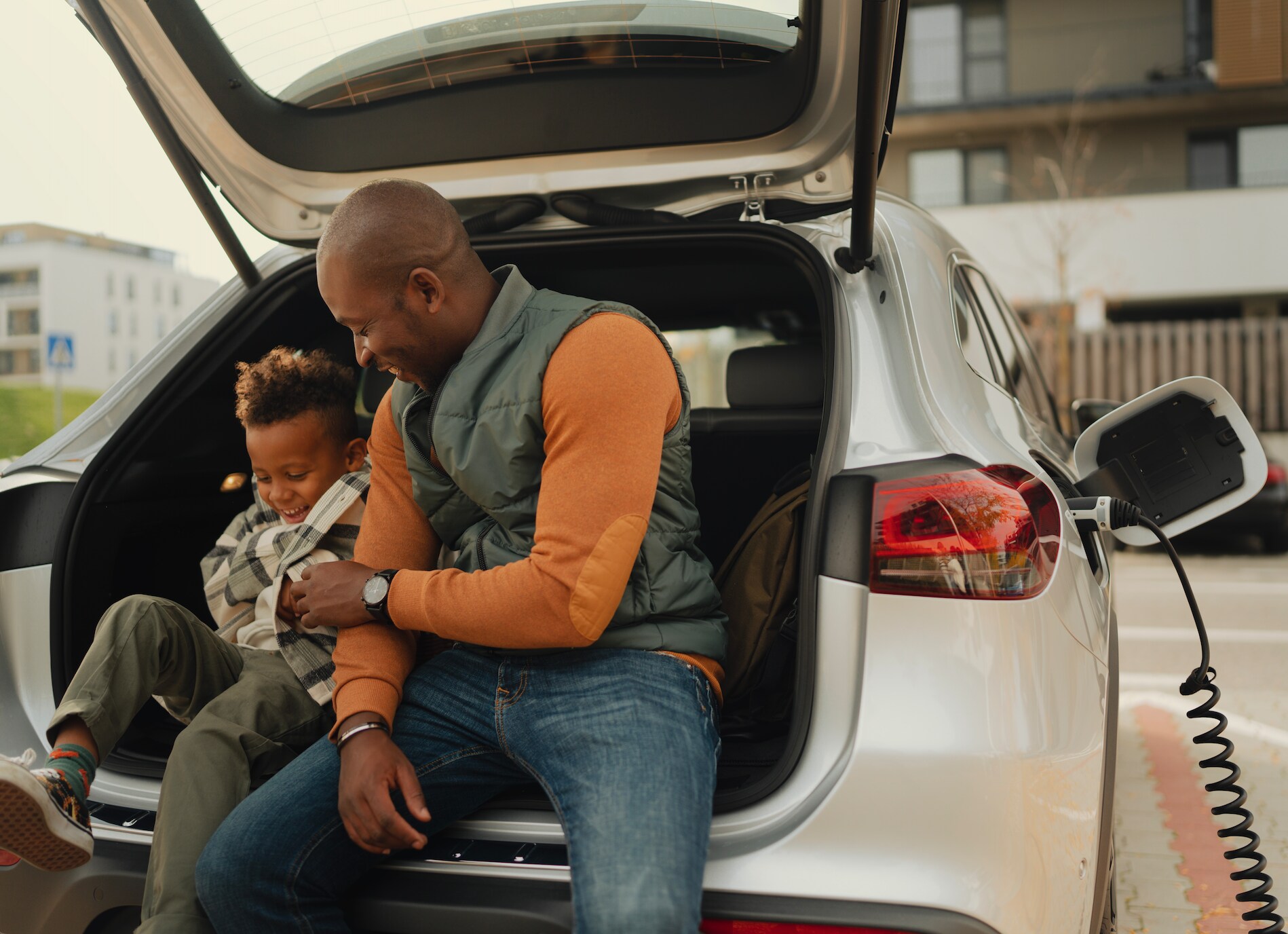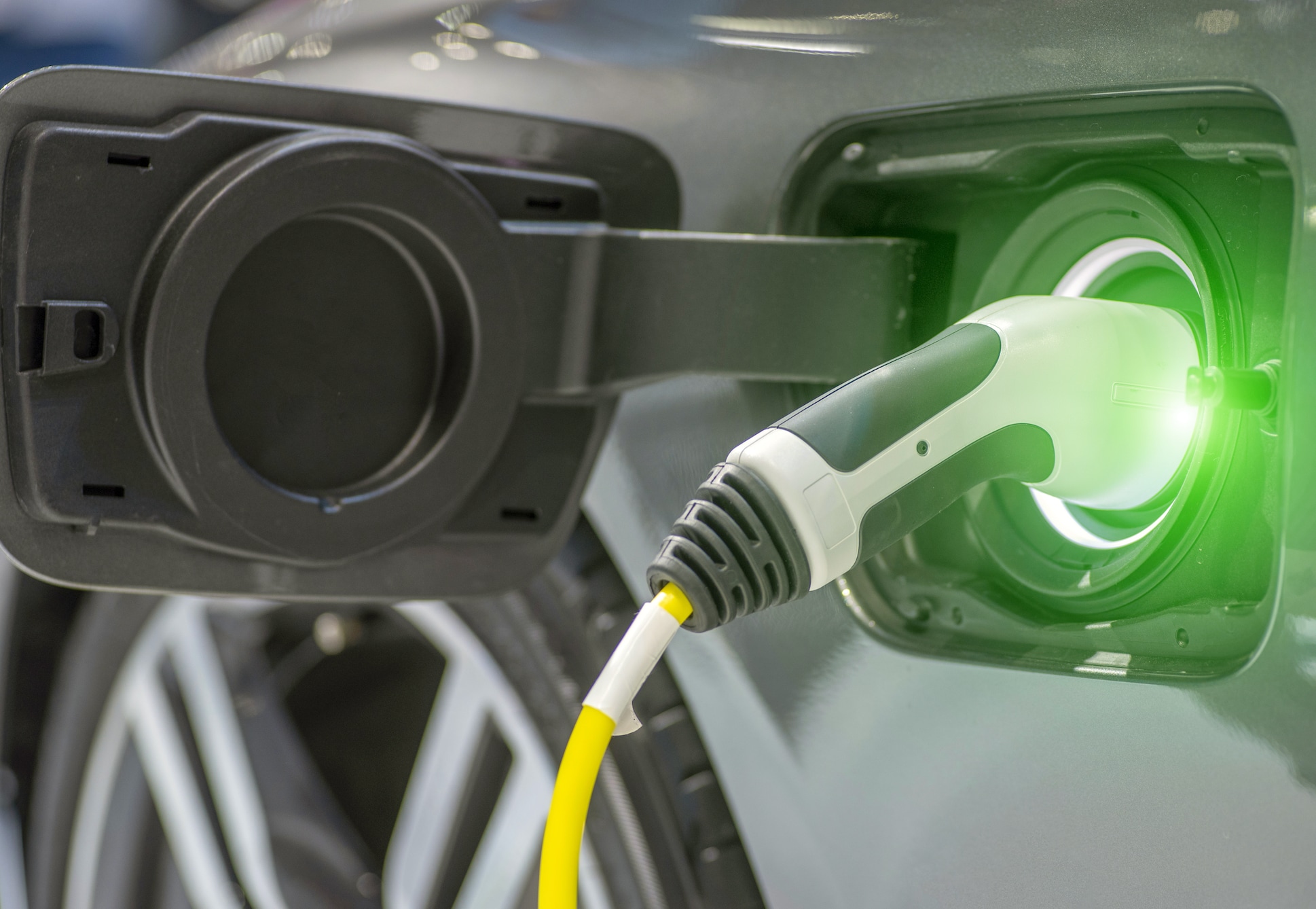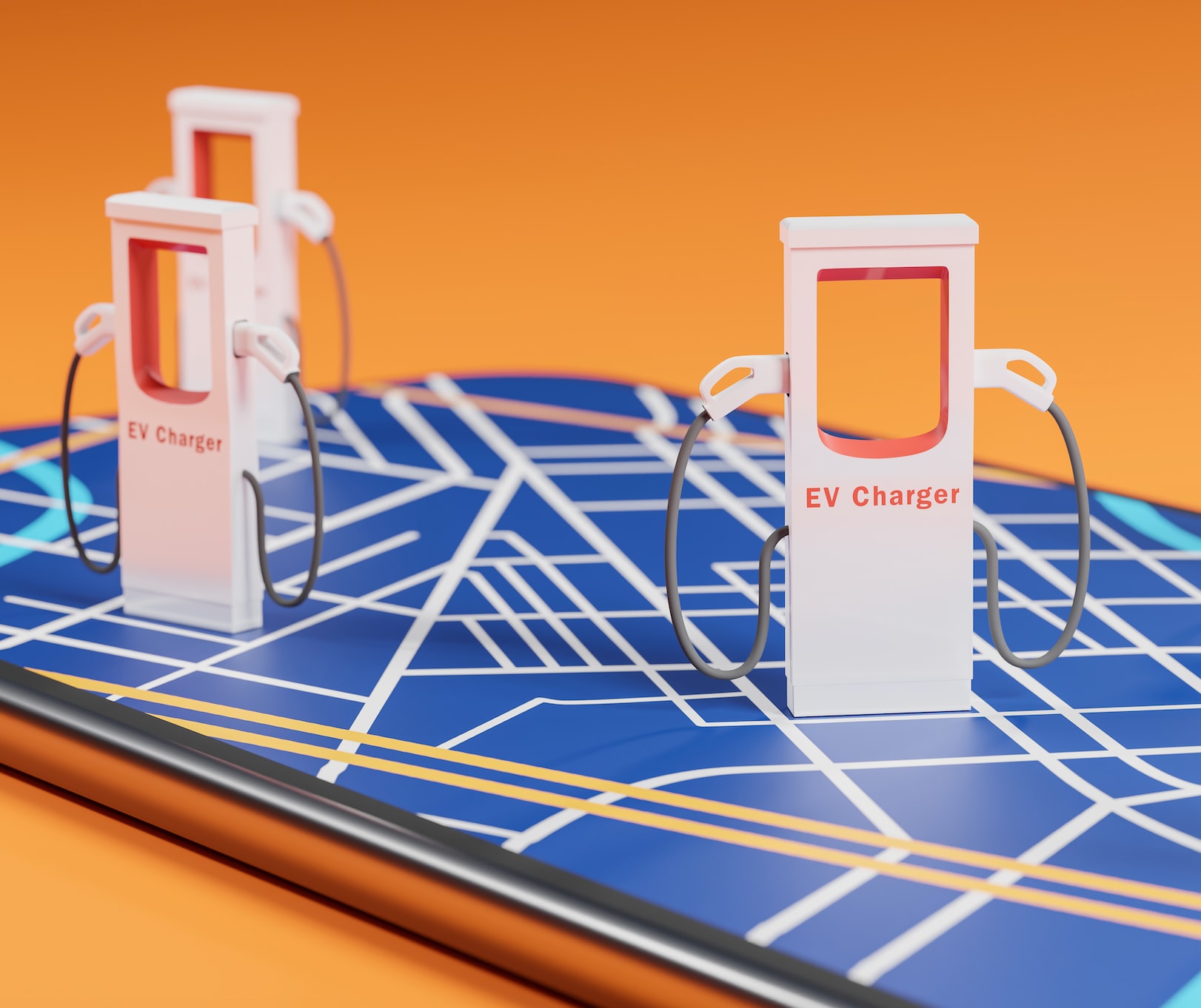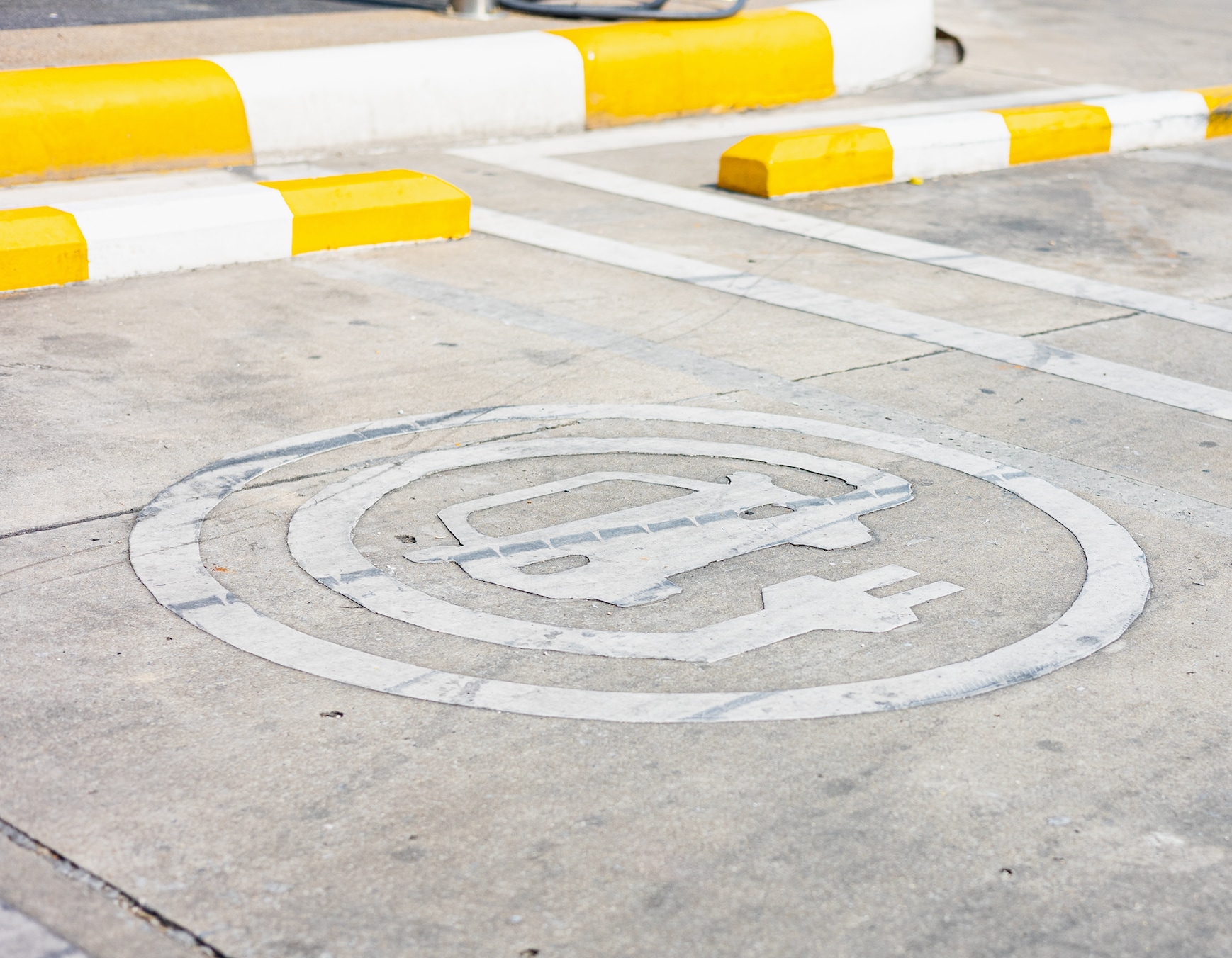All-electric vehicles (EV) run out of juice just like gasoline-powered cars run out of fuel. The difference is that it takes longer to charge up your EV. Most modern EVs have a range of 200 to 300 miles before they need to be recharged *All mileage is EPA estimated. Early adopters soon realized that any "range anxiety" they imagined soon dissipated when they realized that their new cars were a lot like smartphones; you simply plug them in and unplug them when the battery is topped off.

Charging Up
EVs generally have one or two electric motors that produce power to the wheels and those motors are powered by lithium-ion battery packs. Since most EVs have a range of over 200 miles on a charge, and since most people only drive 40 miles per day on average, you only have to plug your car in in recharge it once every couple of days.
There are three levels of charging. Level 1 charging uses standard household 120-volt AC current. You simply plug your EV into a regular wall plug at home. It is just like plugging in a toaster. Because Level 1 charging uses the least amount of current, it also takes the longest to charge your car. Level 1 chargers can take 40 to 50 hours to charge an EV from 20 percent to 80 percent. For those who own plug-in hybrids, the charge time could take five or six hours. *All mileage is EPA estimated.
To speed charging up, a lot of EV owners have a 220-volt outlet run in their garage. This is called Level 2 charging. Your clothes dryer uses 220 current and having a 220-line added involves having a certified electrician come out and run a line for your electric car. Level 2 charging can fuel your EV with electrons much quicker. A charge to 80 percent takes four to ten hours and charging up a plug-in hybrid only takes one or two hours. The great thing about Level 2 charging is that you can run around in your EV, come home, and plug it in, and every morning, you wake up to a car that is filled with juice and ready to go (like charging your smartphone).
For even faster charging, there's Level 3 charging, also known as DC Fast Charging. Direct current fast charging equipment is very expensive. A typical DC Fast Charging station costs over 30K. You generally find these Charging Stations at malls, businesses, and city centers. Level 3 charging can charge an EV to 80 percent in just 30 minutes. This kind of charging is great if you are on an extended road trip. Rather than pulling into a gas station, you plug your car into a DC Fast Charger and go have lunch or a coffee. When you get back, you're ready to continue your journey.
How to Charge an EV
Electric cars come with a charging port and a connector that plugs into the electricity. Depending on the vehicle make and model, you can open the charging port via the vehicle touchscreen or by pressing on the charge port cover. If you are using a Charging Station away from home, simply remove the charging station connector from its dock and insert it into the vehicle's charge port. While charging, the charge port logo will flash green. The vehicle's touchscreen will show you the charge percentage and the time remaining to a full charge. When complete, push the connector button to stop charging, remove the cable and return it to the charging station.


Where to Charge
As of this writing there are over 130,000 EV charging stations available across America with over 500,000 more stations coming by 2030. The majority of these charging stations are found at business offices, parking garages, and retail parking lots and downtown streets. It's easy to find these charging stations. In Tesla vehicles, the company's proprietary charging stations appear as red pins on the navigation screen.
Smartphone apps such as Google Maps, ChargePoint, and Plugshare show the nearest charging stations from your location, and you can also visit the Electrify America website. to find stations throughout the country. Charging times depend on the size of the battery in your EV and the charging station output.
Cost of Charging
Most EV owners do the majority of their charging at home on Level 1 or Level 2 charging which is the most cost-effective way to go. The average American pays 12 cents per kilowatt hour (kWh) to charge their EVs, adding $30 to $60 per month to their electric bill. Compare that to what you spend each month on gasoline.
DC Fast Charging is mainly used while on long trips and is not suggested for frequent charging as it can degrade battery life over time. Many consumer store chains such as Target, Walmart, Kohl's, Macy's, and even Starbucks offer charging stations and some of these are free. The majority of DC Fast Charging stations charge a fee based on kWh usage or charging time. Rates at these stations vary but apps such as ChargePoint and PlugShare can reduce charging costs by locating free or less expensive charge stations near your location.

Tips for maximum EV Range
Electric car batteries depreciate over time, just like the battery in your smartphone. But battery degradation happens over a long period and in an EV, you might only notice a loss of one percent of range per year. In fact, today's electric car batteries are designed to last longer that the vehicle itself. Here are a few tips for getting the most life out of your car's battery pack and maximizing range.
Just like a gas-powered car, how you drive can affect how much power you use. With electric cars, a lead foot on the accelerator and harsh braking, uses up electricity much faster. A safe and easy driving style will get you farther down the road. Driving slower conserves energy and over time, staying off the accelerator will add life to your battery. By the same token, using more power-draining accessories such as the climate control and stereo system will deplete the battery quicker.
It is important not to overcharge lithium-ion batteries. Most EVs allow you to set the level of charge and it is best to charge your car up to 80 percent. If you are driving out of town, it's okay to charge the car to the max, but on a daily basis, your battery will last longer if the battery charge is with 20 to 80 percent.
If you have to park outside on extremely hot days, try to park in the shade. Lithium-ion batteries hate the heat and when they get too hot, the amount of charge is reduced. You'll also lose range when it is extremely cold outside. According to AAA, EVs lose 12 percent of their range in cold weather. That loss can leap up to 41 percent with the car heater on at full blast. Use the heated seats instead.
EVs charge faster at 60- to 80-degrees. They like temperate climates and when hooked up to a DC Fast Charger, a battery at its optimal temperature will charge faster and maintain it longer. Using battery preconditioning ensures the fastest charge times.
Speaking of DC Fast Charging, it is a great way to charge your car up quickly so you can get on down the road. But it comes at a cost because every time you use Level 3 charging, it takes a little bit of long-term life away from the battery. Reducing how often you use Level 3 charging will add life to your precious battery pack for the long haul.


